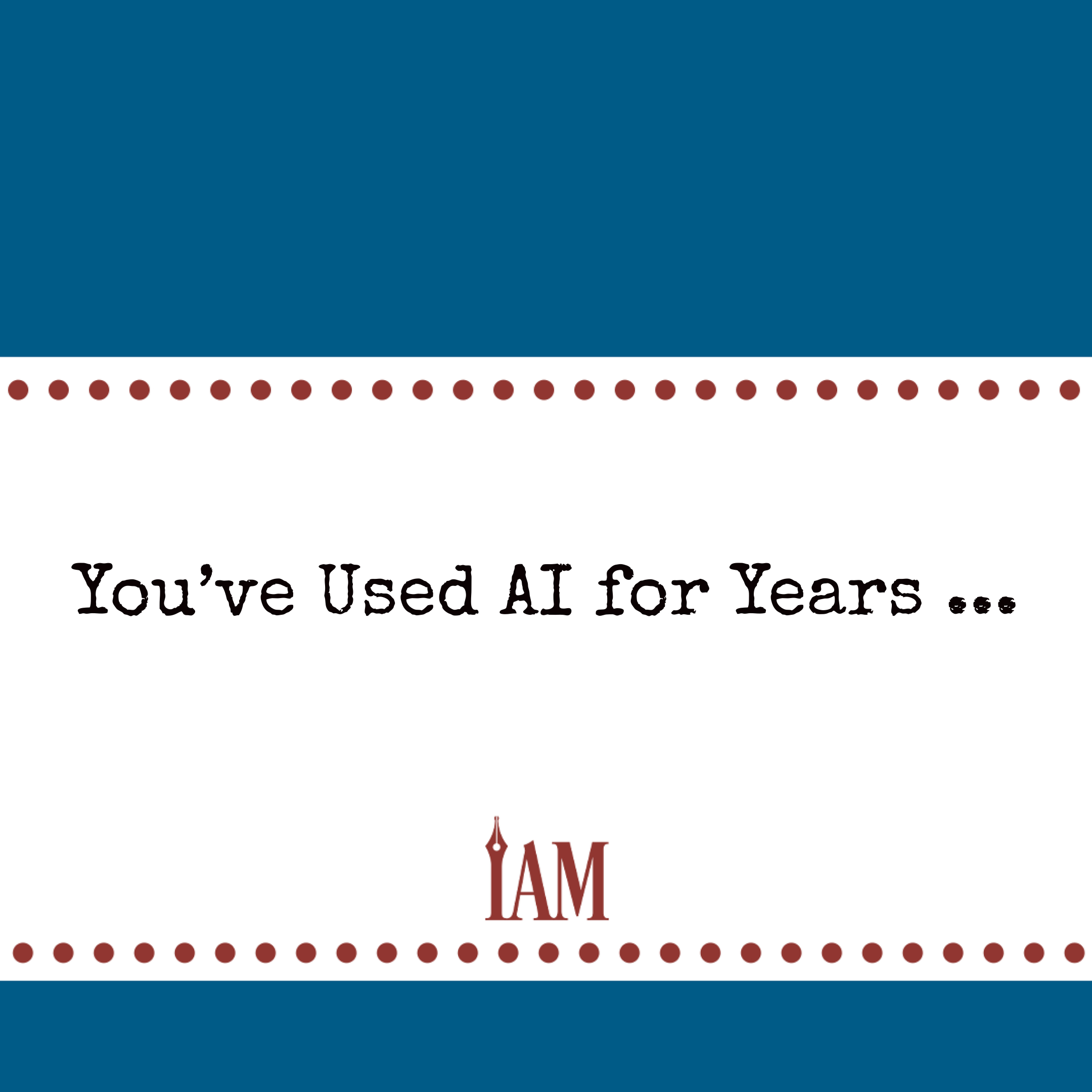… And You Probably Didn’t Realize It.
Technology is constantly changing, yet rarely do we give a lot of thought to what powers that technology. Not so with artificial intelligence, or AI. With the recent surge in AI programs and their capabilities, people in multiple industries have expressed concerns about its potential impact on the workforce, especially in creative communities.
Some current concerns, such as the ethics of the ways some programs are trained, unemployment worries, and privacy issues, mentioned in articles by Forbes, The Harvard Gazette, and VentureBeat, are warranted. Yet it is also important to recognize that AI isn’t new. When a search engine prompts you with options as you type or when spell-check corrects your typo, you probably don’t bat an eye. But these functions are generated by AI, and they’re just two of the many ways we’ve already been using AI to make our lives easier for years.
Here are a few more ways AI has already played its part in your writing career and your daily life.
- Grammarly: When you use Grammarly to check your spelling and grammar, AI helps determine errors and suggest corrections or ways to rephrase your sentences to make them more effective. The program also uses AI to determine your tone in the message and make suggestions to make it more or less formal, depending on your preference.
- ProWritingAid: Similar to Grammarly, ProWritingAid is an online and desktop application that integrates with a variety of programs to enhance your spelling, grammar, and more. Not only does it perform standard grammar and spelling checks and suggest changes; it also now offers a rephrasing tool that will rewrite passive voice sentences to active voice when asked. It also checks for plagiarism, overuse of words or phrases, sentences containing too many words, and more.
- Dragon NaturallySpeaking: Thanks to advances in AI, Dragon NaturallySpeaking—as well as Apple’s Siri, Microsoft’s Cortana, and other dictation and text-to-speech software options—can be trained to learn how you speak and transcribe more accurately in a short amount of time. In addition, users can train the program on any specific words it transcribes incorrectly. This additional accuracy makes it a go-to option for authors who use dictation regularly in their writing.
- Adobe Photoshop: Adobe Photoshop offers users several options for automating corrections, including the program’s object selection tool, photo restoration filter, and one-click delete-and-fill tool for removing something in the foreground of an image. The tools incorporate Adobe’s own machine-learning AI, Adobe Sensei, to detect objects and make corrections, according to The Verge. Multiple Adobe platforms have incorporated Sensei since 2017, which has made programs like Photoshop more accessible and efficient to use, even for those without photo-editing experience.
- Social media scheduling platforms: Many social media scheduling platforms provide suggested topics for people to use when creating posts based on holidays, recognition events, or memories they may want to share. Additionally, many social media scheduling platforms will tell you, based on when people interact with your posts the most, days and times on which to schedule posts, so they receive the most visibility and engagement. All of these suggestions are determined by AI that analyzes data over time.
- Amazon and Facebook Ads: Amazon and Facebook Ads use auto-targeting to help you find your audience through their various channels. This targeting mechanism employs AI to do the work, with the only input coming from you, the author, when you set up and tweak the ads, audiences, and keywords.
- Email spam filters and whitelists: It doesn’t matter who your email host is; almost all of them offer a feature that determines which email addresses or content are spam. Often, this determination results from AI that examines which emails you whitelist or block and learns accordingly.
- Newsletter predictive sending: If you use predictive send for your newsletters, your provider is using AI to determine the best time to send your newsletter to specific email addresses based on open rates, time zones, and other information gathered by its system.
These programs are just the tip of the iceberg when you consider how much AI plays a role in our lives. Even though newer AI programs are making a stir in the author world, AI has been playing an essential and well-integrated role in writing and writing-related tasks for years without us realizing it.
Grace Snoke


